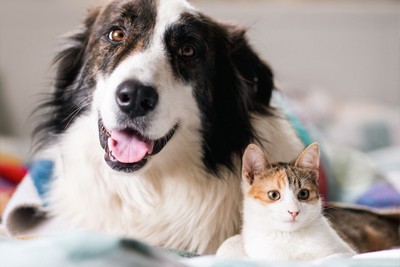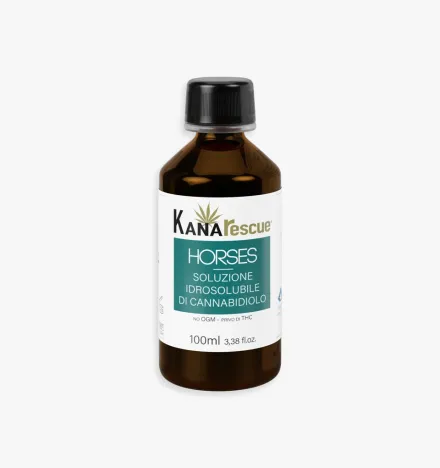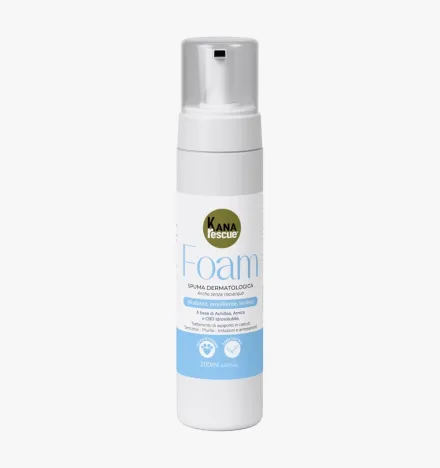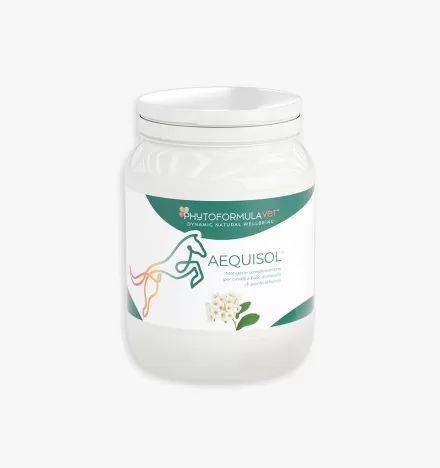Alterations in the animal's behavior and psychophysical condition
Alterations in behavior and psychophysical conditions in animals can manifest in many forms, from unusual attitudes such as apathy or hyperactivity to more obvious signs of distress of aggression or anxiety. Recognizing their symptoms, understanding their causes, and intervening promptly is essential to protect the animal's psychophysical well-being.
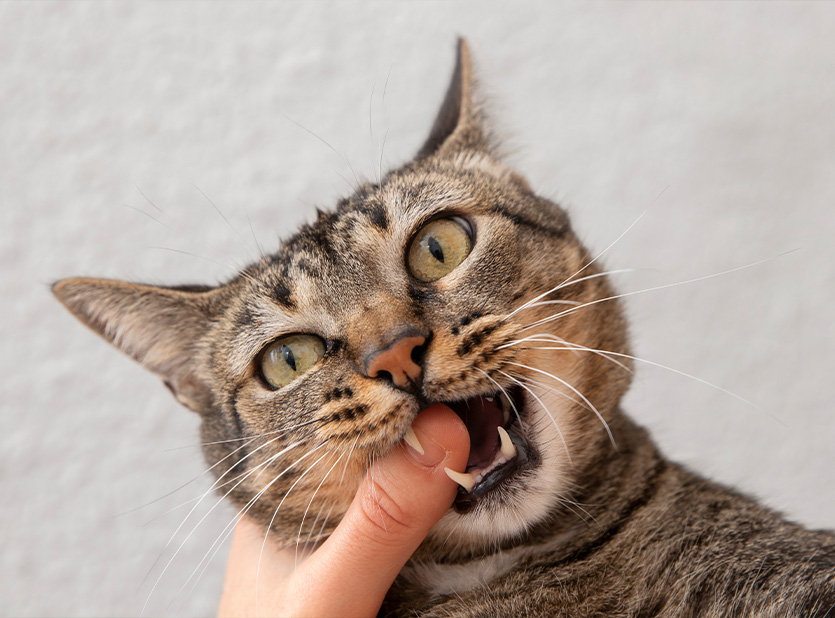
ALTERATIONS IN THE ANIMAL'S BEHAVIOR AND PSYCHOPHYSICAL CONDITION: RECOGNIZE THEM, TREAT THEM, PREVENT THEM
Just as physical injuries are a common occurrence in the lives of animals, behavioral and psychophysical disturbances can also occur in various situations, especially in response to environmental changes, trauma, or prolonged stressful conditions. These signs should not be underestimated, as they can evolve into more complex issues that are difficult to manage.
Just as with physical injuries, intervening quickly is crucial: monitoring the animal's behavior, observing any changes, and contacting a veterinarian or behavior specialist are actions that ensure recovery and prevention of complications.
WHAT IS MEANT BY ALTERATIONS IN THE ANIMAL'S BEHAVIOR AND PSYCHOPHYSICAL CONDITION?
Alterations in behavior and psychophysical conditions in animals refer to significant changes in the way they act, react, or manifest their unwell state. These changes can involve both behavioral aspects, such as unusual attitudes or unexpected reactions, and aspects related to the animal's physical and mental health:
- Behavioral alterations: these mainly involve changes in the way the animal interacts with the environment or with others. They may include unusual attitudes, such as sudden aggression, unmotivated fear, apathy, or stereotyped behaviors (e.g., repetitive movements). These are signs that reflect a change in the animal's response to external or internal stimuli.
- Alterations in psychophysical conditions: these involve both the mental and physical state of the animal, with manifestations that may include symptoms of stress, anxiety, depression or overt physical discomfort, such as weight loss, changes in sleep-wake rhythm or changes in energy level. They stem from a more general malaise that may affect the animal's ability to carry out its normal daily activities.
These signs often indicate an imbalance in the animal's general well-being, can be temporary or chronic, mild or severe, and can result from multiple factors, such as physical discomfort, environmental changes, or emotional trauma. In any case, they are an indicator of the animal's general state and its ability to adapt to its environment.
Defining what is meant by these alterations means, therefore, observing the general picture of the animal: its behavior, its physical state, and its interactions with the environment and those around it. This makes it possible to intervene with awareness and to identify any need for support or treatment.
CAUSES
Defining what is meant by these alterations means, therefore, looking at the general picture of the animal: its behavior, its physical state, and its interactions with the environment and those around it. This makes it possible to intervene with awareness and to identify any need for support or treatment.
- Painful states and inflammation: pain, especially if persistent, is a major reason for discomfort in animals. Situations such as joint pain or inflammatory processes due to injury or disease can restrict movement, making the animal less active and more irritable. This condition is often reflected in behavior that is different from usual, such as a greater tendency for isolation or reduced tolerance for interactions.
- Osteoarthritis: this degenerative form of arthritis is not only a disease of older animals, but can also affect younger individuals. Chronic pain and difficulty in movement can negatively affect the animal's mood, which may become less interested in playing, moving or socializing, showing a more withdrawn or impatient attitude.
- Itching and skin discomfort: dermatological disorders, such as allergies or parasitic infestations, cause intense and continuous itching. These problems induce compulsive behaviors, such as excessive scratching or licking, which can further aggravate the situation and create a vicious cycle of stress and discomfort.
- General health problems: infections, hormonal imbalances or digestive difficulties, such as constipation or diarrhea, directly affect the animal's state of well-being. These disorders are often manifested by signs such as apathy, restlessness or changes in eating habits, affecting both the body and behavior.
- Anxiety and stress: Emotionally destabilizing situations, such as separation from the owner, travel, or sudden loud noises (thunderstorms, fireworks), can trigger anxiety or stress. Anxious animals tend to react with unusual behaviors, such as taking refuge in hidden places, hyperactivity or even destructive attitudes.
- Physical or emotional trauma: traumatic events, such as accidents, mistreatment or drastic changes in their environment, can leave lasting marks both physically and psychologically. These animals may show distrust of people or other animals, isolation, or aggressive behavior that reflects their distressed state.
SIGNS AND SYMPTOMS
Altered states in the animal are manifested through a series of signs that may be more or less obvious, depending on the nature and severity of the problem. Knowing how to recognize these symptoms is essential to intervene early and prevent complications. Each symptom represents an alarm bell that indicates a potential imbalance in the animal's well-being.
- Isolation and loss of social interest: an animal that distances itself from its peers or owner, avoiding contact or showing indifference, may manifest a form of emotional or physical distress.
- Changes in appetite: a sudden reduction or increase in hunger may be a clear sign of distress. The animal may lose interest in food because of physical problems, such as pain or gastrointestinal illness, or manifest nervous hunger related to stress or anxiety.
- Apathy and lethargy: A decrease in energy and involvement in daily activities, such as play or walks, is often indicative of malaise. The animal may seem less motivated to move or interact, preferring to remain isolated or sleep more than usual.
- Hyperactivity and restlessness: in contrast, overly agitated or nervous behavior may be a sign of anxiety or stress. Restless animals may move continuously, bark or meow insistently, or fail to relax.
- Repetitive or obsessive behaviors: compulsive licking or scratching, turning in on oneself, or relentless biting of objects are behaviors that often indicate physical or psychological distress. These attitudes can worsen over time if no action is taken.
- Obvious physical signs: tremors, stiff postures, difficulty moving or walking may indicate pain or joint problems. In addition, symptoms such as weight loss, matted hair or skin changes may be related to deeper issues.
- Altered sleeping habits: sleeping too much or, conversely, suffering from insomnia are signs that the animal is not comfortable. Disturbed sleep can result from both physical causes and emotional factors.
- Sudden aggression or fear: An animal that suddenly becomes aggressive or fearful may be reacting to pain, anxiety, or traumatic experiences. These changes in temperament require special attention, as they often indicate unseen distress.
Complications
These altered states in animals, if not addressed, can lead to complications such as worsening physical pain, secondary infections, malnutrition or general decline. Behaviorally, anxiety, aggression or isolation can become chronic, compromising the animal's quality of life and relationship with the owner.
DIAGNOSIS
Diagnosis of altered behavior and psychophysical conditions in animals requires a multidisciplinary approach, combining clinical observation with specific diagnostic tools. The veterinarian, after collecting a detailed history from the owner, analyzes the animal's behavior and assesses any associated physical symptoms. Depending on the signs found, additional tests, such as blood tests, neurological tests, or radiographs, may be necessary to rule out organic pathology. In some cases, the involvement of an animal behavior expert is helpful to identify emotional or environmental causes and develop a targeted treatment plan.
PREVENTION
Prevention of altered states-both behavioral and psychophysical-in animals, regardless of species, is essential to ensure that they have a balanced and satisfying life. Each animal, whether a dog, cat, horse, rabbit, bird or reptile, has specific needs related to its nature, environment and lifestyle. Here are some universal strategies that can be adapted to all species:
- Regular checkups and health monitoring: making regular visits to a veterinarian specializing in the species in question allows for early detection of any physical or behavioral problems. Daily observation by the owner is also essential to detect any changes.
- Proper care and physical stress management: keeping the animal in good physical condition means ensuring a balanced diet, access to timely medical care, and an environment that minimizes stress and health risks.
- Mental stimulation and specific activities: offering the animal activities that respect its nature is crucial. For example, horses need space to move freely, birds need games that stimulate their intellect, and reptiles and small animals require appropriate environmental enrichments.
- Creating an appropriate environment: whether it is a barn, cage, aquarium or home, the environment must meet the specific needs of the species, such as temperature, humidity, space and access to vital resources.
- Socialization and positive interactions: for social animals, it is important to foster safe and beneficial interactions with their peers or humans. Even solitary animals benefit from stimuli that promote their emotional well-being.
- Gradual adaptation to change: sudden changes to the environment or routine can destabilize the animal. Gradually introducing new elements, such as companions, spaces or activities, helps reduce stress and anxiety.
Adapting these strategies to the specific needs of each species is essential to keep the animal healthy, preventing the onset of behavioral or psychophysical problems. Thorough knowledge of the animal's characteristics, regular consultation with the veterinarian, and a personalized approach are the pillars of effective prevention.
NATURAL REMEDIES
Natural remedies offer gentle and effective support to address behavioral alterations in animals, promoting their well-being in a non-invasive way. Here are some natural ingredients that, when used correctly and under veterinary supervision, can help:
- Hemp oil: rich in essential fatty acids such as omega-3 and omega-6, it is useful for improving overall well-being and supporting skin and coat health.
- Cannabidiol (CBD): derived from hemp, is known for its anti-inflammatory and calming properties. It is particularly useful for reducing stress, anxiety and chronic pain, but must be administered under close veterinary supervision.
- Aloe Vera: administered in moderation, it can contribute to general well-being, helping especially in cases of itchy or irritated skin.
- Omega-3: found in fish and flaxseed oils, supports mental and physical well-being, while also improving nervous system and skin health.
- Chamomile: known for its calming properties, it is useful for relieving states of anxiety and restlessness.
- Valerian: particularly effective in reducing agitation and promoting relaxation, especially in acute stress situations.
- Passionflower: used for its anxiolytic effect, it is suitable for many species to mitigate symptoms of anxiety and nervousness.
- Melissa: ideal for animals with mild states of agitation, promotes relaxation without significant side effects.
- Bach flowers: are often used to reduce stress, fears and emotional trauma.
- Lime Tree Extract: Known for its relaxing properties, it is useful for animals showing signs of agitation or insomnia.
These remedies, when used correctly, can be a valuable aid in improving the animal's quality of life. It is essential to consult an experienced veterinarian to determine the most appropriate choice, dosage, and mode of administration, taking into account the specific characteristics of the species and the health condition of the animal.
MEDICAL TREATMENTS
Medical treatments for behavioral alterations in animals focus primarily on managing the underlying causes, rather than simply controlling symptoms. Accurate diagnosis is critical to identifying the source of the problem and establishing the most appropriate treatment plan.
In the case of painful states or physical conditions, such as joint pain, inflammation, or chronic diseases, pain-relieving drugs, anti-inflammatory drugs, or specific therapies can be used to improve the animal's quality of life. These treatments relieve physical discomfort, thereby also contributing to behavioral stability. In addition, natural products with soothing and regenerative action can be used. One example is Hypermix®, a herbal product based on Hypericum and Neem, which is useful for the management of skin problems due to its moisturizing, soothing and protective properties.
For behavioral alterations, such as anxiety, hyperactivity, or aggression, anxiolytic drugs, sedatives, or specific supplements that support the nervous system may be prescribed. These treatments are often used in combination with behavioral or environmental approaches to achieve lasting results.
In all cases, medical treatments should be tailored to the species, the specific condition of the animal, and its overall health status. The veterinarian will carefully weigh the benefits and risks, always trying to take a comprehensive approach that includes management of physical, emotional, or environmental causes.
HEMP AND CANNABIDIOL (CBD): NEXT-GENERATION NATURAL-BASED TREATMENTS
In recent years, the use of natural ingredients such as Cannabidiol (CBD) has revolutionized support for the general well-being of animals. These herbal products are particularly valued for their antioxidant, soothing and regenerative properties, which can help improve psychophysical balance, soothe itches and prevent unhealthy situations.
The Kanarescue® line, developed with advanced formulas, offers specific solutions for different animal species, supporting wellness and addressing problems that compromise the animal's psychological and physical well-being.
Among the available treatment options, we recommend:
- Kanarescue® Horses (water-soluble solution for horses): indicated to relieve itching and discomfort in horses, it is enriched with Aloe Vera, Peppermint, Sage and Grapefruit seed. It contributes to skin regeneration, counteracts infections and supports the immune system.
The Kanarescue® line represents a breakthrough in the treatment of skin issues and general animal well-being. Based on Cannabidiol (CBD), these products take advantage of the protective, soothing and regenerative properties of these natural compounds, offering effective and gentle support.
GENERAL TIPS FOR THE TREATMENT OF ALTERED STATES OF ANIMAL BEHAVIOR
- Balanced nutrition and natural supplements: a diet rich in essential nutrients such as omega-3s, vitamins and specific plant extracts helps support the nervous system and promotes balanced behavior. Complementary feeds, such as Aequisol, can be a valuable support for physical and mental well-being.
- Careful observation: monitor any changes in your pet's behavior, appetite or mobility. Recognizing early signs of pain or discomfort is critical for appropriate intervention.
- Always consult your veterinarian: avoid do-it-yourself and rely on a professional for an accurate diagnosis and personalized treatment. Your veterinarian will be able to guide you on the best path for your pet's health.
- Follow the treatment plan: strictly adhere to your veterinarian's instructions, including medications, dosages and complementary therapies, to ensure effective and safe results.
- Create a safe and welcoming environment: avoid slippery surfaces or obstacles that could cause discomfort or stress to the animal. A stable environment contributes to his overall well-being.
- Relaxation techniques: practices such as massage or gentle touch can be very helpful in reducing physical tension and promoting relaxation. They are particularly suitable for pets such as dogs, cats and horses, but can also be adapted for smaller species.
Products to treat Alterations
Do you have a question?
Our team of experts has an answer for you!
What steps should be taken during the healing phase to prevent the animal from licking or damaging the wound?
During the healing phase of a wound, the animal may experience itching caused by normal healing. In such cases, specific devices such as Elizabethan collars, inflatable collars, breathable containment bandages, and braces can be used to avoid self-traumatization due to scratching, licking, and pecking.
What are the stages of wound healing?
There are three stages of wound healing:
Stage 1: exudative or inflammatory or also called cleansing stage
Stage 2: granulation or proliferative phase (granulation tissue formation)
Stage 3: epithelialization or regenerative phase (scar formation and epithelialization)
Highlights
Choose the beneficial properties of our effective and safe plant-based products for the well-being and care of your pets.
Subscribe to the Newsletter, for you 10% discount!
Stay up-to-date with all the latest news, promotions and exclusive offers from RI.MOS. VET.

